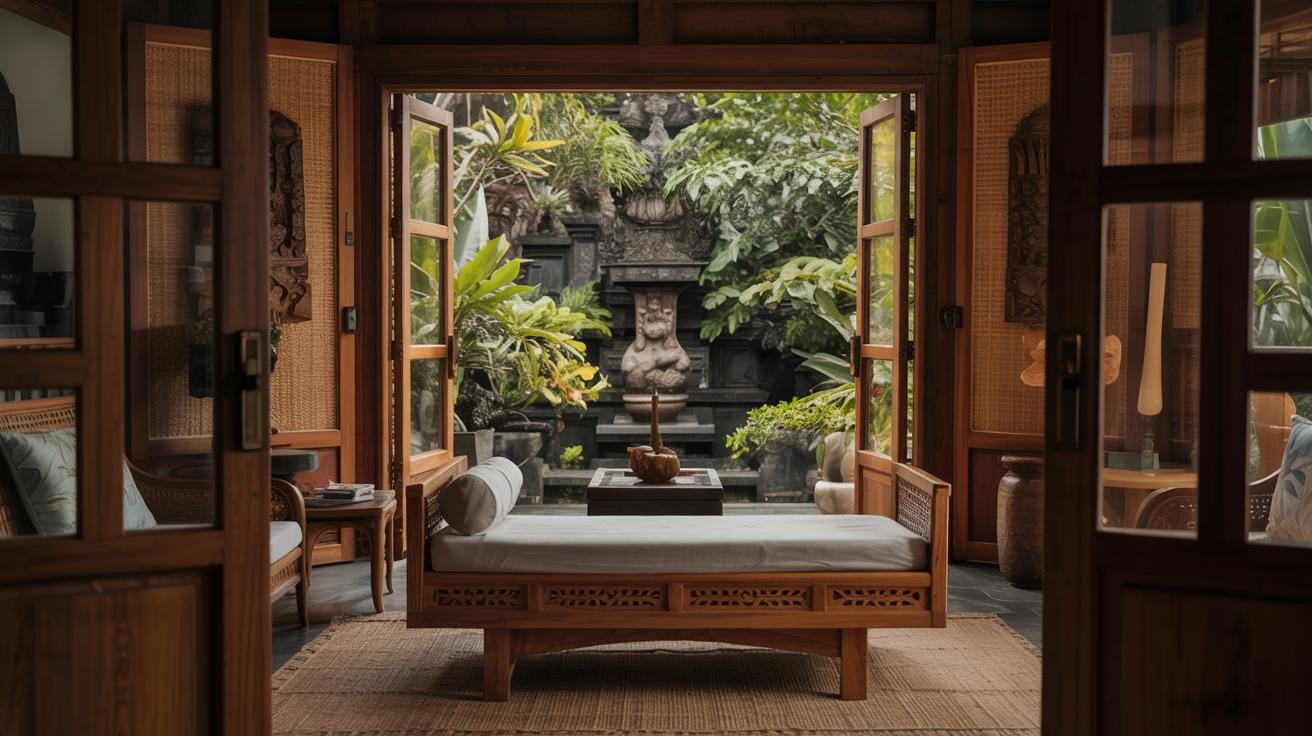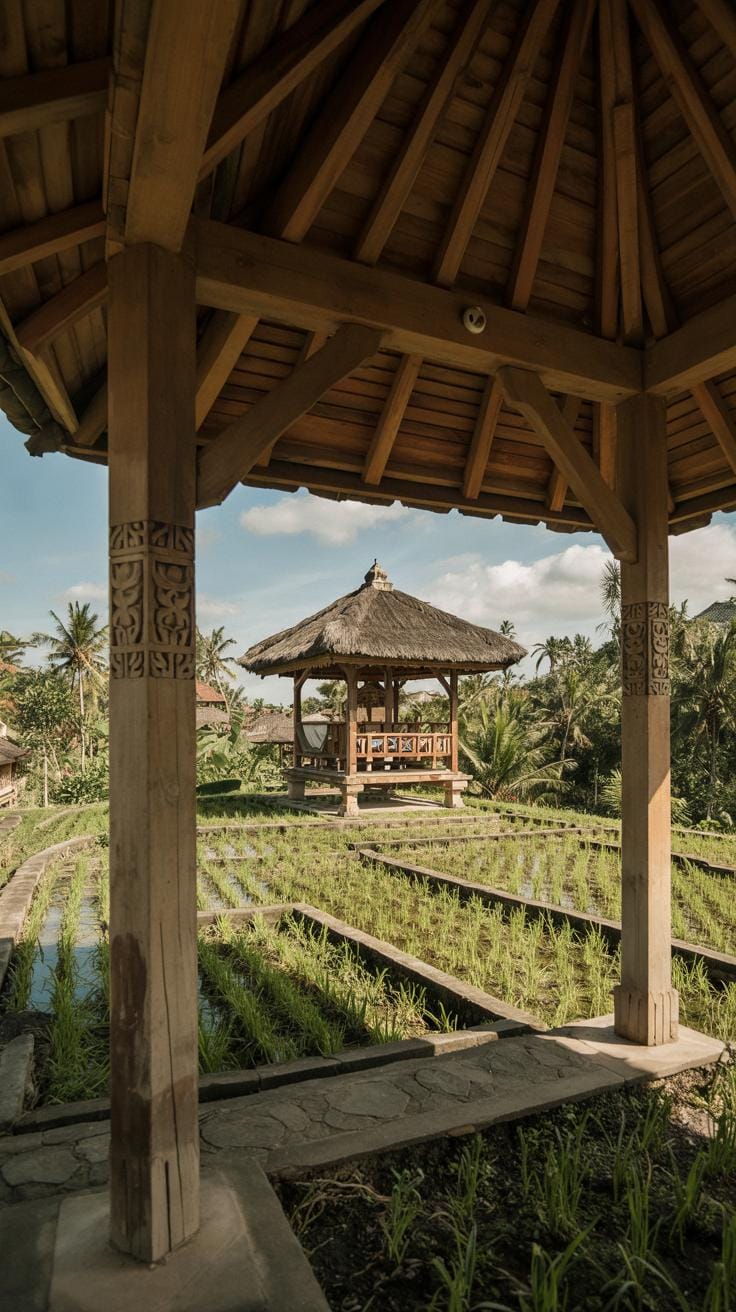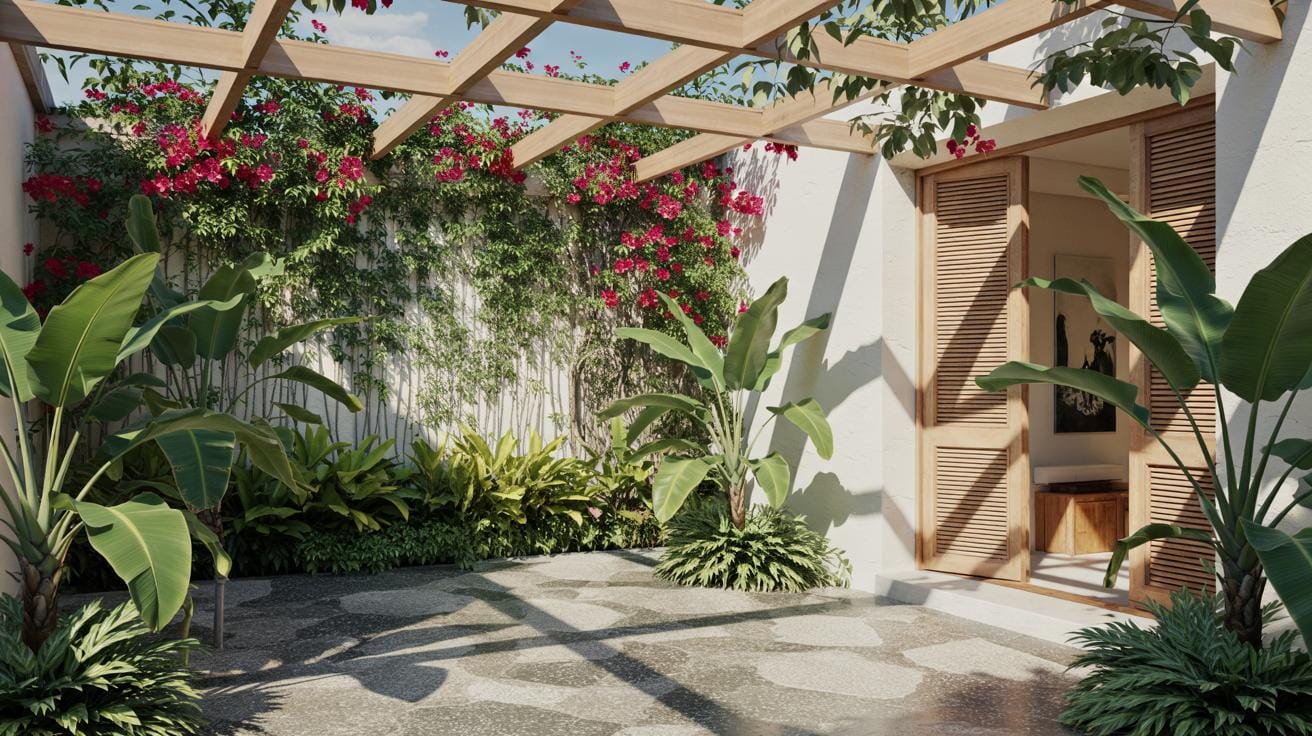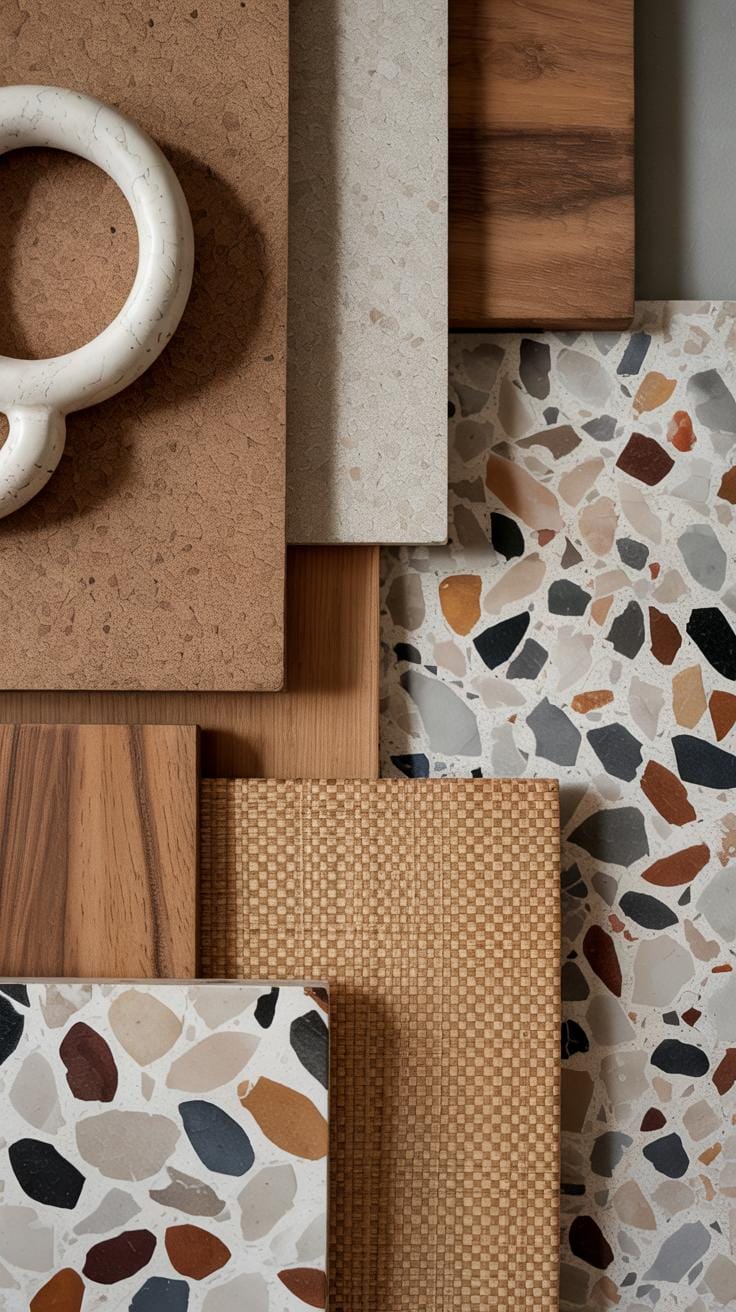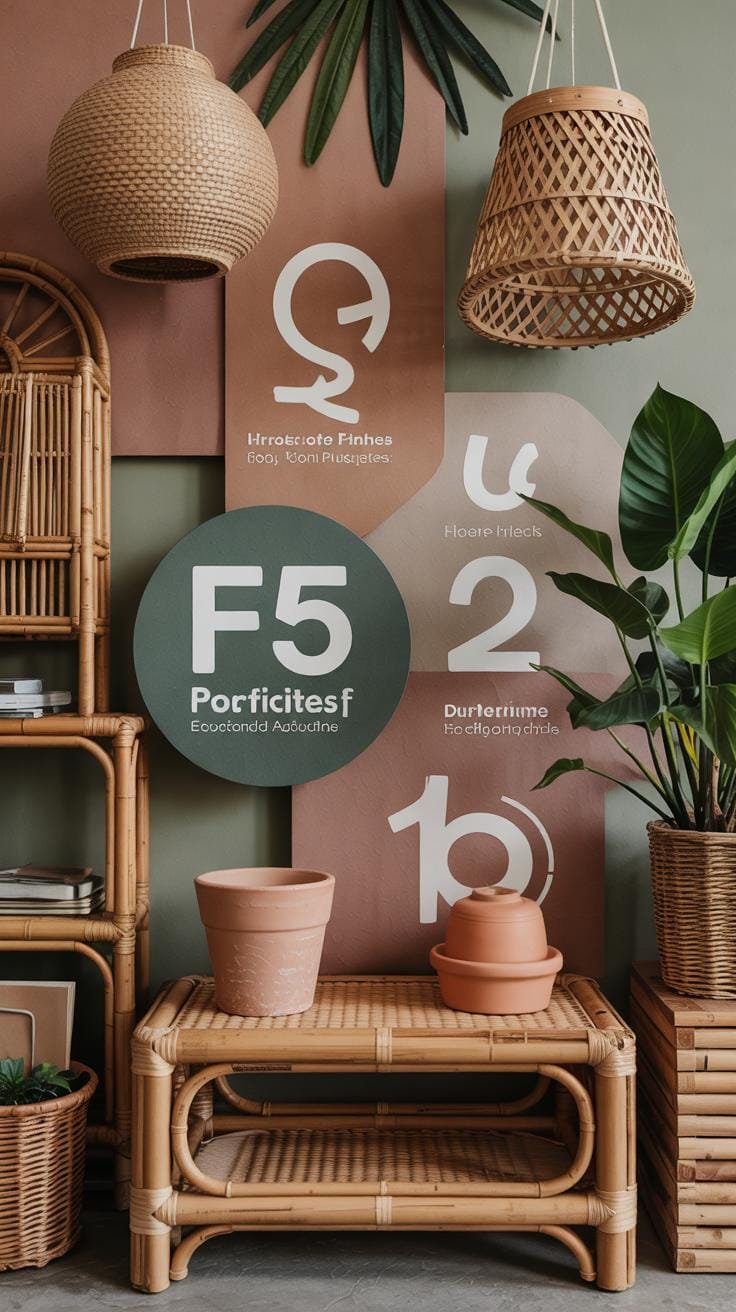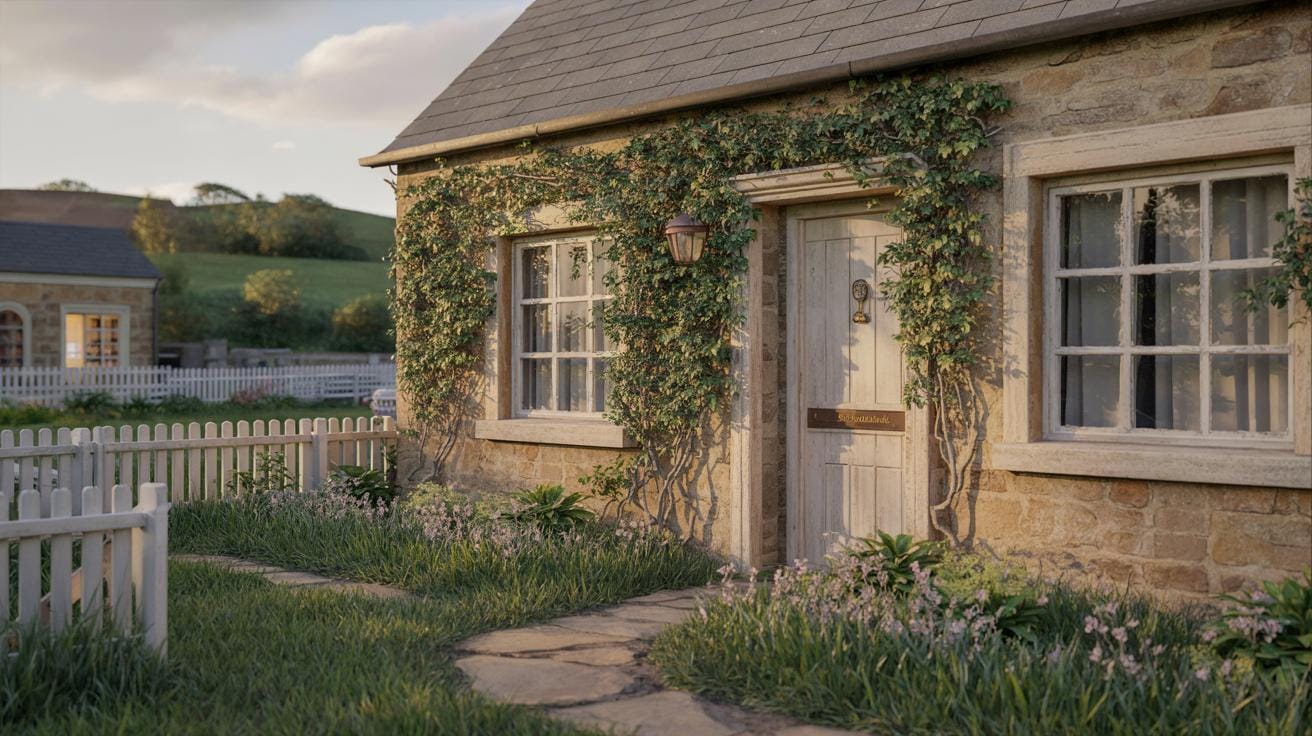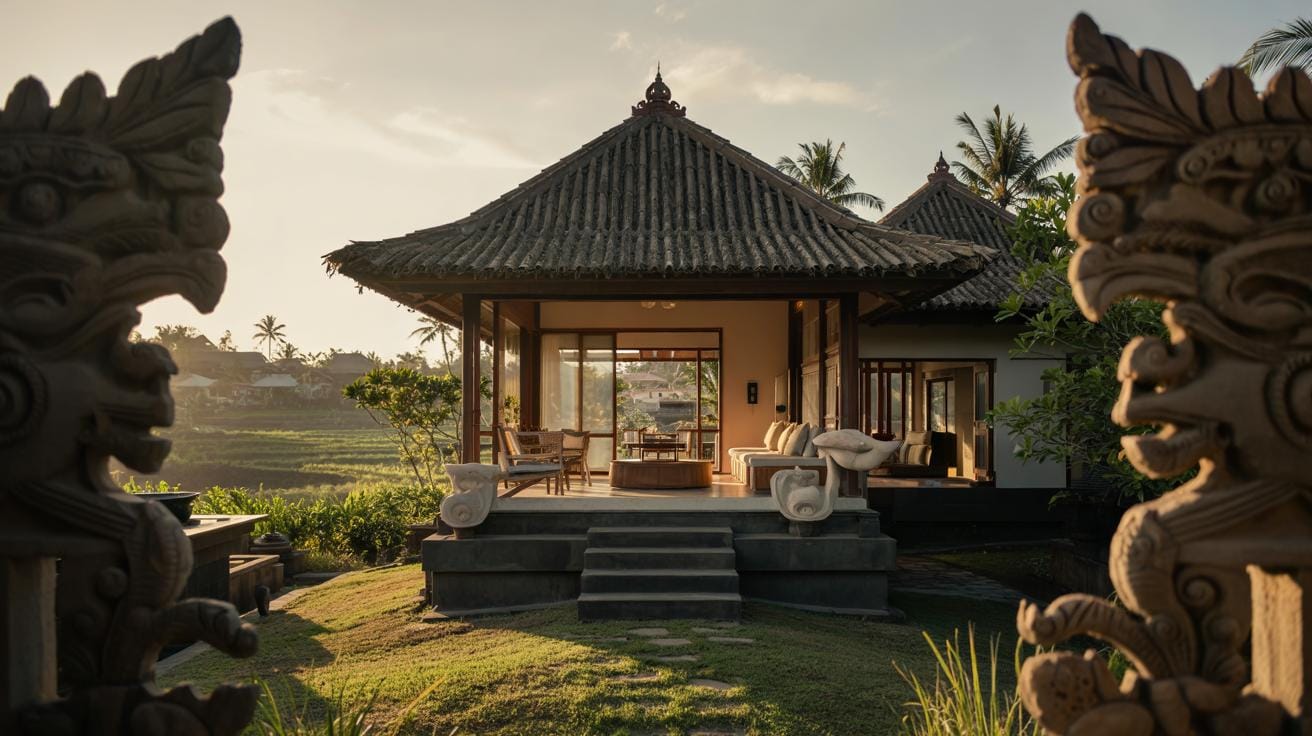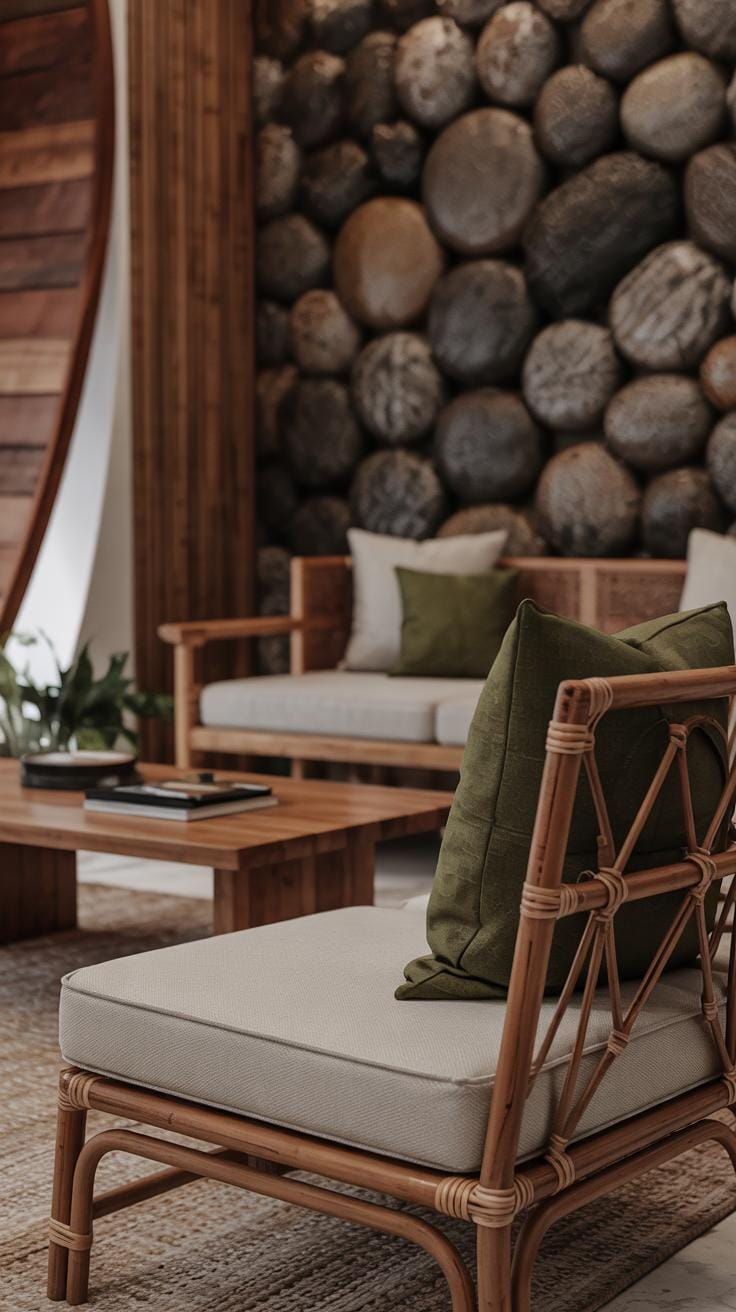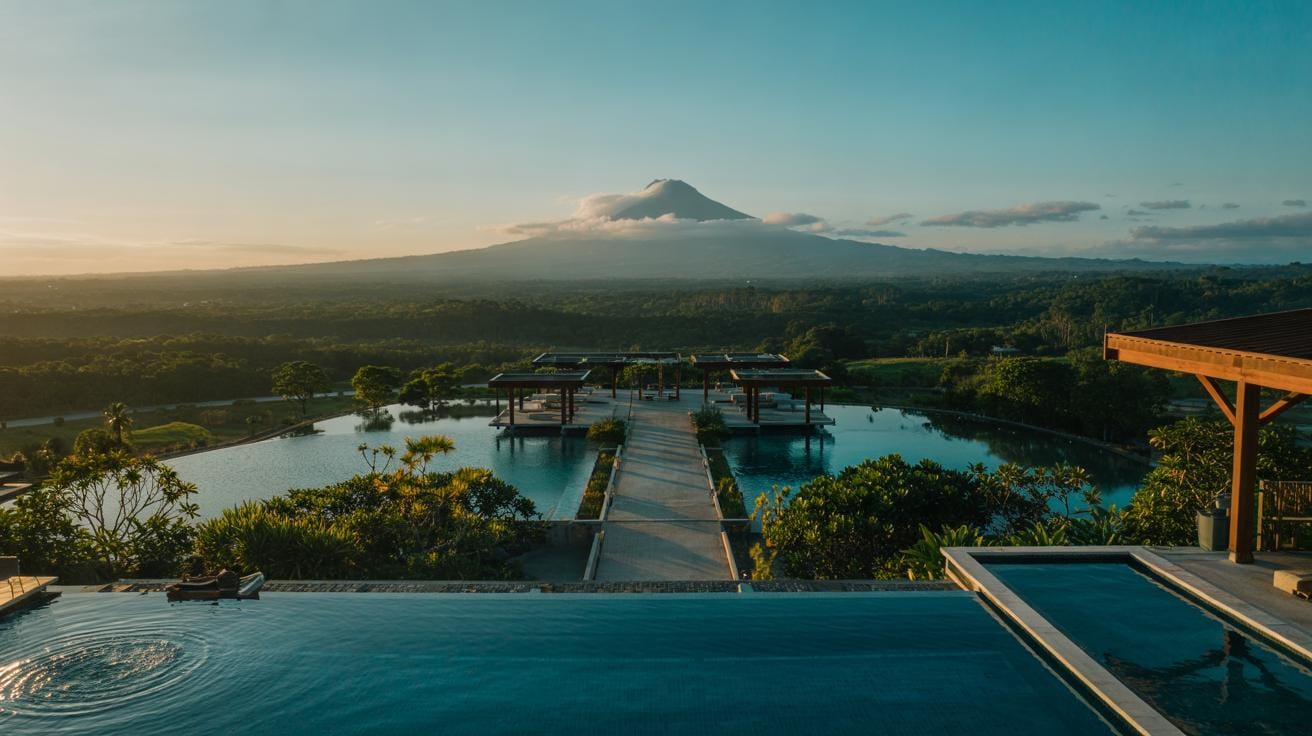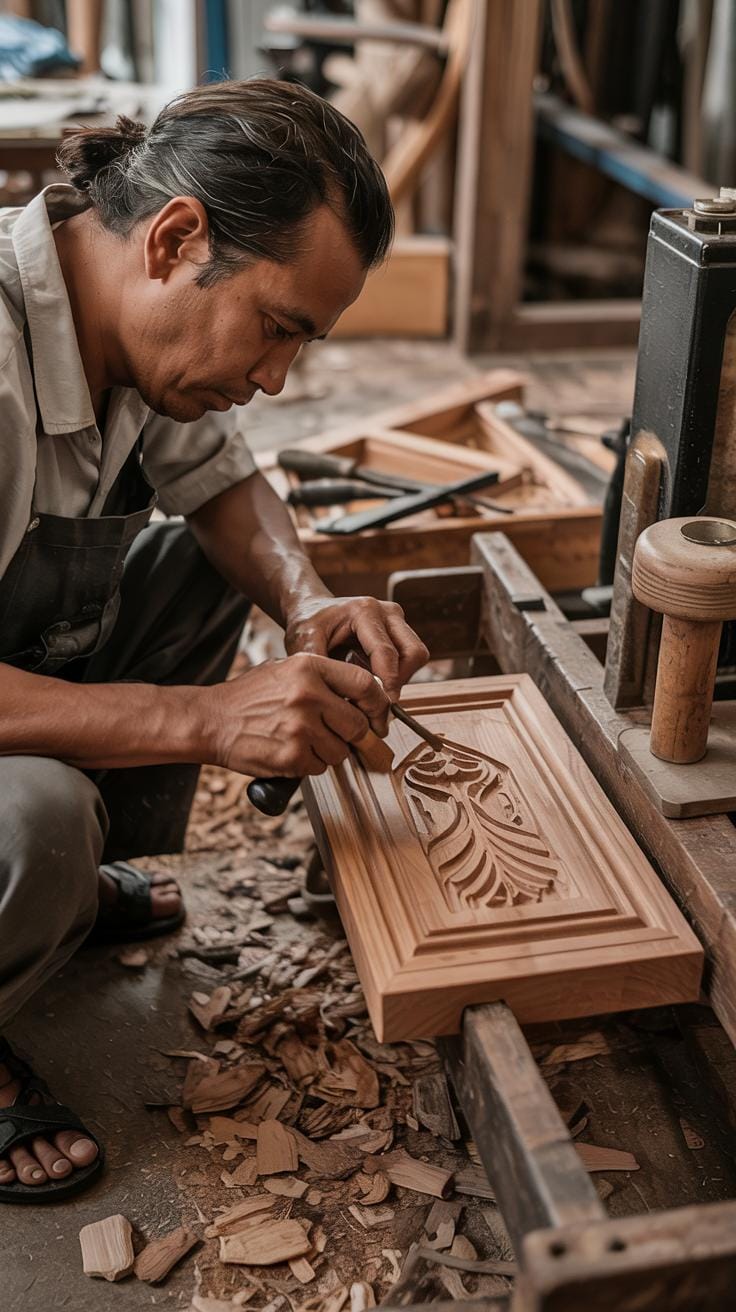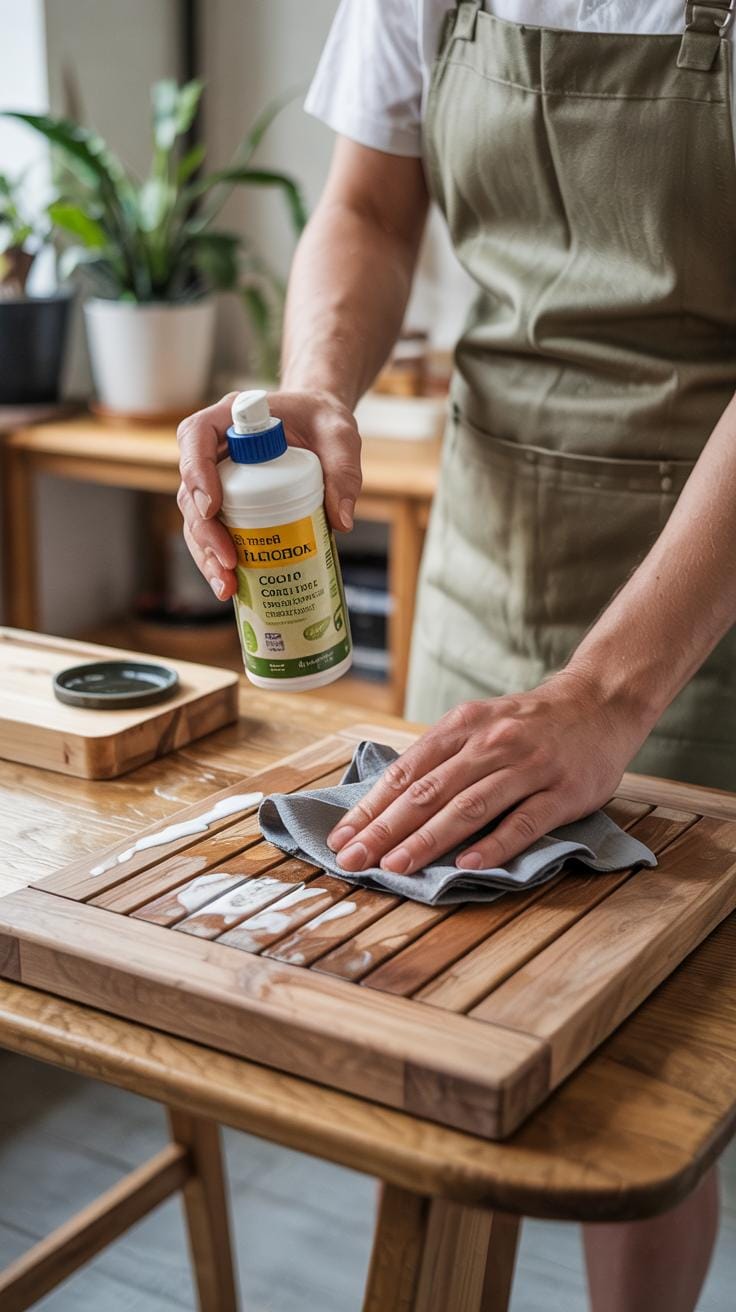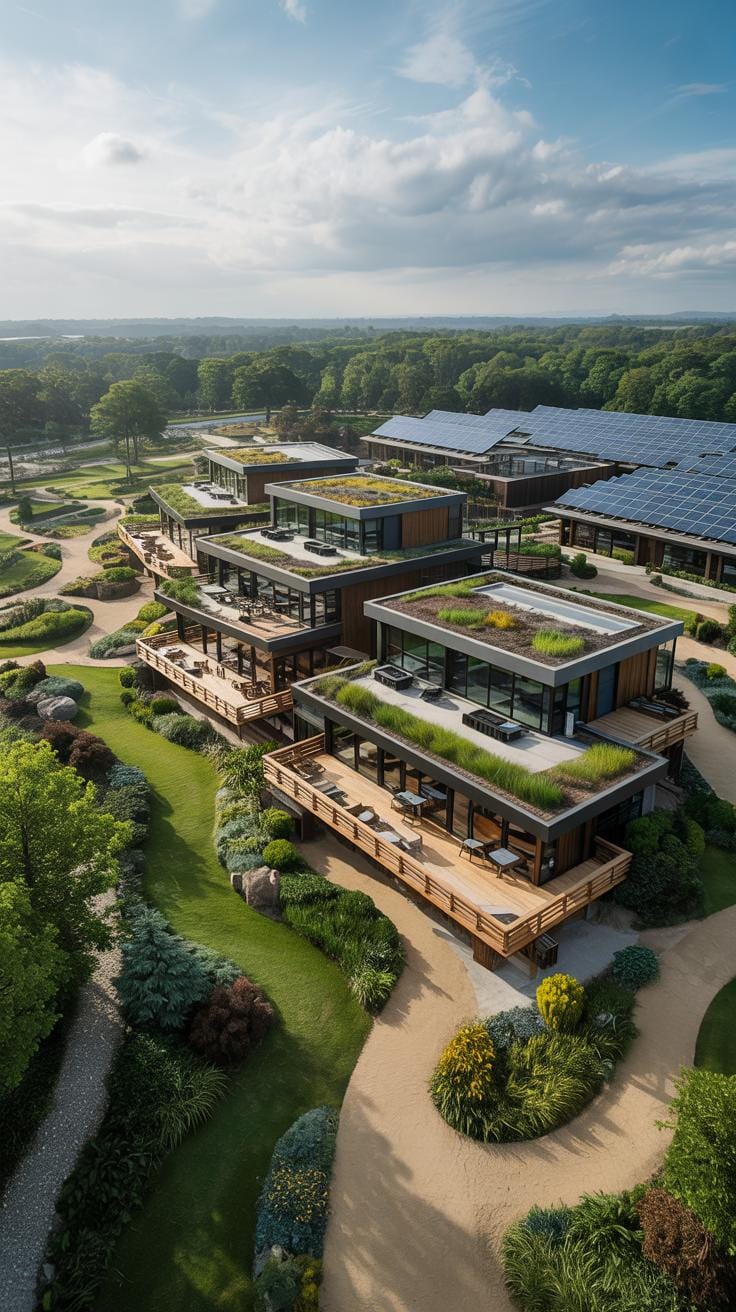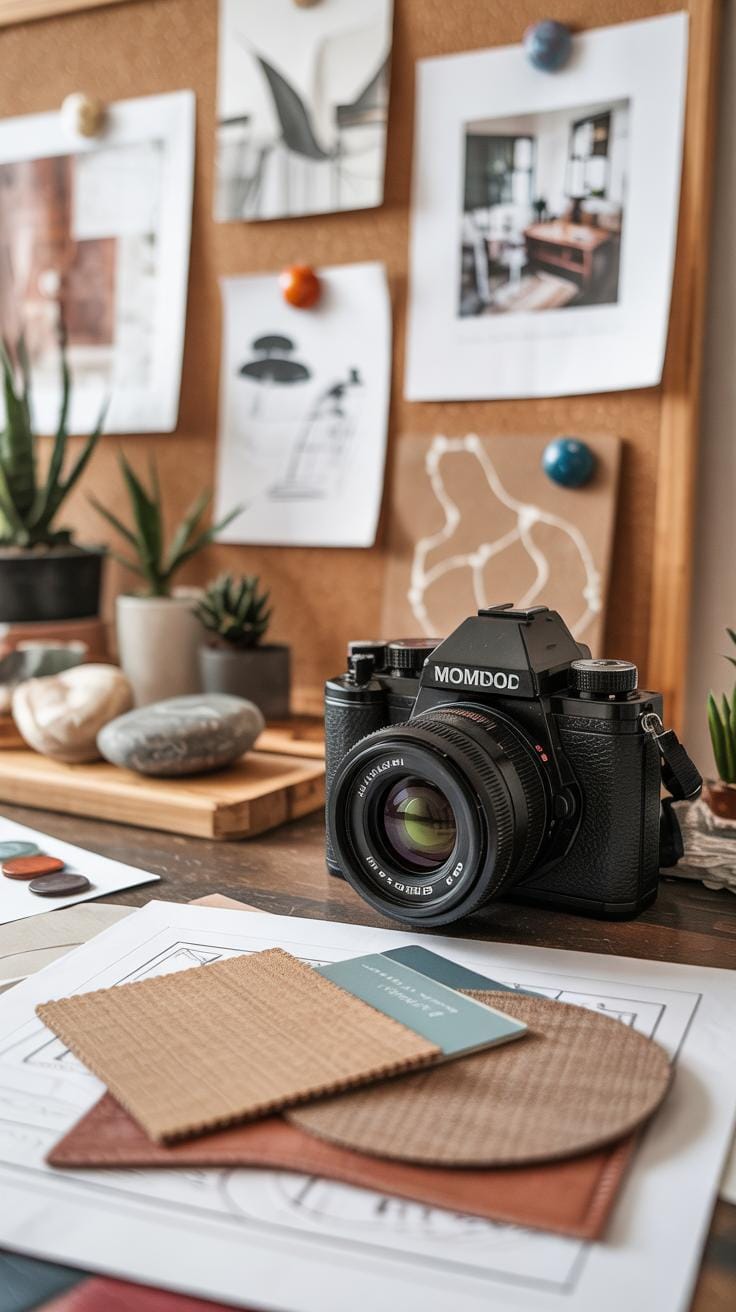Introduction
Bali homes have a strong connection to their surroundings and culture. The design of a Bali house often incorporates the natural environment and traditional craftsmanship. Using local materials not only supports the local economy but also keeps the interiors authentic and environmentally friendly. Natural materials such as bamboo, wood, and stone are popular in Bali homes, providing a warm and calming atmosphere. By choosing local materials, you also tap into the cultural heritage that gives Bali houses their unique charm. Your home becomes more than just a place to live; it becomes a reflection of nature and tradition.
There are many ways you can refresh your Bali house interiors with local materials. This approach lets you bring a slice of Bali’s natural beauty indoors. It creates spaces that feel peaceful and welcoming. Using these materials wisely can also improve the durability and comfort of your home. From structural elements to decor, local resources play a vital role. This article guides you through practical ideas and steps to enrich your living space with Bali’s native materials, ensuring your home stays stylish, natural, and connected to its roots.
Understanding Bali House Architecture
Bali houses show a clear connection between culture and environment. They are often built around open spaces that bring fresh air and natural light inside. The layout invites nature in through gardens, water features, and open pavilions. This connection helps create peace and harmony with the surroundings. You will see structures with thatched roofs and wooden frames that blend with the tropical landscape. The homes are designed to catch cooling breezes and protect from heavy rains.
Traditional Bali houses work with the land, not against it. They sit low and spread wide to follow the natural contours. Gardens often surround these homes, providing a calm boundary where plants and trees thrive. This design encourages you to feel grounded and close to nature every day. In what ways could your own home embrace this flow between indoors and outdoors?
Traditional Layout and Function
Balinese homes divide spaces clearly for both family living and rituals. You will usually find a central courtyard where open pavilions stand. These pavilions work for social gatherings, meals, or rest. Family members use other parts of the home for sleeping or cooking. Areas for offerings and small temples are separate but always close by.
Each space serves a clear purpose. Indoor rooms offer privacy and shelter, while open spaces welcome community and ceremony. This balance lets daily life run smoothly alongside cultural practices. How might you organize your living areas to support both quiet time and shared moments?
Cultural Values in Design
Balinese Hinduism plays a big role in shaping house designs. Temples and shrines sit on specific grounds to honor the gods. Ritual spaces inside homes allow offerings and prayers to happen regularly. These areas bring spiritual meaning to everyday life and help keep traditions alive.
Homes often face south or east to align with spiritual directions. Walls and gates mark sacred boundaries, inviting respect when entering. Community celebrations often spill into the open pavilions. This makes your home a gathering place beyond just family. Have you thought about how your space can support your cultural or spiritual values?
Popular Local Materials for Interiors in Bali
Bali homes often feature materials that respond well to the island’s tropical climate. Commonly, bamboo, teak wood, stone, and local textiles create interiors that feel natural and comfortable. Bamboo offers lightweight strength and breathability, which helps keep rooms cooler. It grows quickly in Bali, making it a sustainable choice. Teak wood, harvested from local plantations, provides hardiness and insect resistance. Its tight grain also fits humid conditions without warping. Stone brings cool surfaces and rugged texture, ideal for flooring and accent walls. It stays cool underfoot even during hot days. Local textiles add softness through cushion covers or curtains, using fibers like cotton or ikat weavings. These fabrics often show traditional motifs, connecting your space to Balinese culture. What if your interiors could blend durability with nature’s calm through these materials?
Bamboo and Teak Wood
Bamboo in Bali often comes from clusters near riverbanks, where it grows tall and straight. After cutting, craftsmen dry the stalks and split them into strips. These strips become flooring, paneling, or furniture pieces. Bamboo’s tensile strength equals steel but remains light. It resists moisture well but benefits from treatment to prevent insect damage. You will find bamboo adds a warm, organic feel to rooms. Teak wood, on the other hand, is harvested from managed forests. It’s dense with natural oils that keep away termites and prevent water absorption. Processing teak involves careful cutting and sanding to preserve its smooth grain. Furniture made from teak lasts decades and gains character over time. Both materials bring clear lines and rich textures. Have you ever noticed how these woods create a peaceful mood just by their presence?
Stones and Textiles
Natural stone is popular for flooring because it cools rooms during Bali’s humid heat. Locally, volcanic stones and limestone come in varied tones, such as dark gray or creamy white. These stones provide durable, low-maintenance floors with natural slip resistance. You can also use stone for accent walls or around fireplaces to add depth without bulk. For textiles, cotton and silk blends dominate interiors, often in cushions and curtains. Many fabrics use ikat weaving, a technique unique to the region that involves dyeing fibers before weaving to create vivid patterns. These textiles feel light even in warm weather and carry cultural stories through their designs. Using these materials lets you connect your home with the island’s heritage while keeping your interiors breathable and visually rich. Are you ready to bring a touch of Bali’s earth and craft into your living space?
Benefits of Using Local Materials
Using local materials in your Bali home offers practical benefits beyond style.
Local materials reduce the need for long-distance shipping, which cuts down on your home’s carbon footprint. When you choose materials sourced nearby, you lessen pollution and energy use related to transport.
Supporting local craftsmen and producers helps Bali’s economy. Local artisans bring skill and tradition to their work, creating materials that reflect the island’s heritage. You directly contribute to their livelihoods by choosing local resources.
Some materials, like bamboo and teak, grow quickly or are sustainably harvested, making them smarter choices for the environment. These materials also tend to cost less since they avoid import fees and shipping charges.
Consider how your material choices affect both the environment and the local community. Can your home’s design strengthen Bali’s culture while saving money and reducing waste? Prioritizing local materials makes your Bali home more sustainable and connected to its place.
Environmental and Economic Impact
Choosing local materials lowers your home’s carbon footprint. Materials don’t have to travel far, which reduces fuel use and air pollution.
Local sourcing often involves traditional methods that use less energy than mass manufacturing. Natural materials like stone and bamboo require minimal processing, adding to their eco-friendliness.
Hiring local craftsmen supports Bali’s economy directly. Their expertise shapes authentic designs that benefit your home and community. Local jobs increase when you invest in materials grown and made on the island.
Local materials can adapt better to Bali’s tropical conditions, reducing maintenance costs. When you buy locally, you also help preserve valuable skills and weave your home into the island’s economic fabric.
Cultural and Aesthetic Value
Using local materials connects your interior to Bali’s culture and history. Natural textures like teak wood or carved stone carry stories told by generations of artisans.
These materials add unique character and warmth that mass-produced items cannot match. Incorporating them highlights the island’s identity and strengthens your sense of place.
You can keep cultural traditions alive by choosing elements made the way Balinese craftsmen have for centuries. This also adds authenticity, making your Bali home feel more genuine.
Ask yourself how your design can celebrate Bali’s artistry. What local materials will bring meaningful beauty and cultural significance into your space? Using native resources helps your home reflect the island’s rich heritage.
Design Ideas to Incorporate Local Materials
Using local materials in your Bali home connects your interior to its surroundings in a simple and meaningful way. Choosing furniture made from bamboo or teak wood invites the natural environment indoors while supporting local craftsmen. Bamboo chairs and tables offer a sturdy yet lightweight option that suits both indoor and outdoor spaces. Teak wood cabinets bring durability and a warm tone that grows richer over time. When selecting these pieces, ask about sustainable sourcing to ensure your choices help preserve Bali’s natural resources.
Walls and floors also play a key role in reflecting local charm. Natural stone floors create cool and textured surfaces perfect for tropical climates. Wood flooring from local trees adds warmth and a timeless appeal. Bamboo paneling on walls introduces subtle textures, or woven mats can serve as decorative wall treatments that showcase traditional weaving techniques. These design details make your home feel grounded and inviting while honoring Bali’s rich natural heritage.
Choosing the Right Local Materials for Your Style
Selecting local materials depends on the style you want to create in your Bali home. For a modern look, consider smooth bamboo with clean lines. Bamboo works well for furniture and wall panels if paired with minimal décor and neutral colors.
If you prefer a rustic or traditional Balinese style, use rich woods like teak or mahogany combined with carved ornaments. These materials add warmth and a handcrafted feel that suits classic designs.
Think about mixing textures such as rough stone floors with polished wood tables or woven rattan chairs. This contrast keeps your interior interesting and inviting. Look at the color tones in your materials and balances darker woods with light bamboo or stone to avoid heaviness.
Ask yourself: Does this material fit my lifestyle and the mood I want? Match materials thoughtfully and create a space that feels natural and authentic.
Matching Materials with Aesthetic
Bamboo pairs well with sleek furniture for a modern interior. Its easy-to-shape nature allows for smooth, simple designs that keep the room feeling open and airy.
Wood, on the other hand, fits traditional or rustic spaces better. Combining wood with carved Balinese decorations, like masks or intricate panels, enhances cultural richness.
Try pairing dark wooden beams with lighter textiles and pottery in a rustic room. For modern designs, use bamboo flooring or wall coverings alongside glass or metal pieces to create clean lines.
How can you blend materials so each complements the other without clashing? Balance the natural shapes and finishes to maintain harmony between old and new.
Color and Texture Coordination
Choosing natural color tones helps create a calm and balanced interior. Soft browns, sandy beiges, and muted greens match most Bali materials.
Textures should support each other. Rough stone walls combined with smooth teak furniture provide pleasing contrast without overwhelming the space.
Using neutral walls allows your natural materials to stand out. If your furniture is dark wood, choose lighter cushions or rugs with subtle patterns to soften the look.
Consider how sunlight moves in your home. Will colors shift too much? Test samples in different lighting before committing.
Which colors and textures draw you in and make your space feel comfortable? Use these elements intentionally to make a home that welcomes you daily.
Working with Local Craftsmen and Artisans
Collaborating with local artisans adds a unique touch to your Bali home interiors. Custom-made furniture and décor crafted by skilled craftsmen reflect authentic Balinese culture and craftsmanship. When you work directly with these artisans, you support the local economy and preserve traditional techniques.
Custom pieces become more than just décor; they tell a story of place and people. You can request designs that fit your exact needs and complement your chosen style. Clear communication is key. Share detailed sketches or photos to help artisans understand your vision and expectations.
Respect for cultural traditions matters. Ask about the meaning behind patterns or materials used. This respect ensures you get quality work that honors Balinese heritage. Your final pieces will feel genuine and connect your interiors with nature and culture in an authentic way.
Finding Skilled Artisans
Start by visiting local markets and workshops in Bali’s villages like Ubud or Celuk, known for wood and metalwork. Ask your hotel staff or neighbors for trusted recommendations. Social media groups dedicated to Bali crafts can also guide you to reliable artisans.
Describe your interior style and purpose clearly. Use visuals whenever possible. It helps avoid misunderstandings and speeds up the design process. Building trust through friendly and honest conversations will increase your chances of getting high-quality work that fits your needs.
Watch the artisan at work if possible. Seeing their skills in action will help you evaluate craftsmanship. Ask questions about their materials and techniques. This approach opens up better communication and a stronger partnership.
Custom Design Process
Begin by discussing your concept and functional needs with the artisan. Share ideas about size, shape, and materials. The artisan will suggest traditional Balinese techniques such as wood carving, rattan weaving, or stone sculpting fit for your design.
Next, review sketches or prototypes. This step lets you make changes before production starts. Make sure the artisan understands the timeline and budget constraints.
Once approved, artisans use local materials to create your piece by hand. This slow process ensures quality and preserves tradition. Expect some variations in finish; they add charm and show craftsmanship. You receive a piece that blends art and function, strengthening the natural feel of your Bali home.
Maintaining and Caring for Natural Materials
Cleaning and Protection
For bamboo, use a soft brush or cloth to dust regularly. Avoid soaking bamboo in water; instead, wipe it gently with a damp cloth. Apply natural oils like tung or linseed oil every few months. These oils protect bamboo from drying out and cracking.
Wood surfaces benefit from regular dusting and cleaning with a mild soap solution. Avoid harsh chemicals that strip natural oils. Polish wooden furniture with beeswax or furniture polish designed for tropical woods to keep the surface smooth and shiny.
Stone requires gentle handling. Clean stone floors or countertops with warm water and mild detergent. Scrub with a soft bristle brush to remove debris. Seal porous stone annually using a breathable sealant to prevent stains and moisture penetration. This prolongs its natural look.
Which of these care routines can you add to your home maintenance schedule without hassle? Taking these simple steps keeps natural materials in your Bali home looking fresh and durable.
Handling Humidity and Pests
Humidity in Bali can cause bamboo and wood to swell or warp. Ensure proper ventilation in your home. Use dehumidifiers or ceiling fans to circulate air especially during the rainy season. Avoid placing wooden items directly on damp floors.
Termites pose a threat to wood and bamboo. Treat new materials with borate solutions before installation. Inspect your home regularly, focusing on hidden corners where pests can thrive. Repair or replace damaged pieces promptly to stop infestations.
Mold grows quickly in humid conditions. Clean affected areas with a mix of vinegar and water. Allow surfaces to dry completely before using. Keep bamboo and wood furniture away from constant water exposure to minimize moisture buildup.
Which preventive step will you implement first to protect your natural materials? Staying vigilant helps your Bali house retain its natural charm without costly repairs.
Sustainable Building Trends in Bali
The building scene in Bali shows a clear shift toward sustainability. Builders often use local materials like bamboo, reclaimed wood, and volcanic stone. These materials not only fit the tropical climate but also break away from heavy reliance on imported concrete and steel.
You will notice newer homes and renovations that blend simple design with these natural resources. Many construction projects avoid harsh chemicals and use natural finishes that allow the materials to breathe and age well in Bali’s humid weather. This approach cuts down on waste and supports long-lasting durability.
Would you consider how using these local materials might change your home’s feel? They bring more than just aesthetic appeal; they connect your space with the earth beneath it. This connection makes your Bali home a tool for sustainability, reducing energy use and minimizing environmental damage.
Local architects and builders often combine traditional techniques with modern needs. This method keeps cultural heritage alive while advancing eco-friendly standards. Could your home benefit from adopting such balance?
Eco-friendly Construction
Bamboo stands out as a preferred material because it grows fast and is easy to work with. Builders design strong, flexible frames from bamboo that rival steel in strength. You might see it used for walls, ceilings, and decorative panels.
Recycling also plays a big role. Developers turn old wood and leftover stone into attractive flooring or furniture. These recycled elements reduce landfill waste and give the home a unique character.
In some projects, waste plastic is converted into bricks or tiles, providing another sustainable option. You can opt for these materials too during renovations or new builds to lower your home’s carbon footprint.
Community and Environmental Impact
Supporting local farmers and craftsmen is a priority. When you choose materials harvested nearby, money stays in the community. This keeps traditions alive and creates jobs that respect the environment.
Building sustainably also means protecting Bali’s natural resources. Many builders select materials that do not cause deforestation or pollution. They work to preserve water quality and reduce soil erosion, helping the island stay healthy over time.
Ask yourself how your home’s materials affect your neighbors and the land. Could you make choices that benefit both? Many homeowners find satisfaction knowing their houses build more than shelter—they build stronger communities and a cleaner environment.
Your Next Steps to Create a Bali Home Interior
Planning and Budgeting
Start by deciding how much you want to spend on local materials and the time needed for your project. Set a clear budget that separates material costs, labor, and unexpected expenses. Think about how each choice fits your overall design and lifestyle. Would choosing bamboo for furniture reduce costs while adding character? Outline a timeline with key milestones to track progress and avoid rushing. Check prices from different suppliers to find the best deals without sacrificing quality. How much are you willing to invest to give your home an authentic Bali feel? Breaking the project into phases helps you manage expenses and makes adjustments easier if needed.
Sourcing and Implementation
Look for trusted local suppliers who specialize in bamboo, alang-alang roofing, teak wood, or stone. Visit traditional markets and workshops to see materials up close. Ask for recommendations on craftsmen experienced with these materials. Collaborate closely with your builder to ensure proper installation and durability. Would hiring a local artisan add unique touches while supporting the community? Schedule delivery and work times to prevent delays. Stay involved during the installation to maintain quality and make on-the-spot decisions. Using local resources not only enriches your home but also connects you to Bali’s culture and environment.
Conclusions
Using local materials is an effective way to reconnect your Bali house with its environment. It brings natural textures and colors inside, creating a harmonious interior. These materials often last longer in Bali’s climate and require less maintenance. Choosing the right elements for your design influences not just aesthetics but also comfort and sustainability. The result is a home that reflects the island’s spirit and your style.
By incorporating Bali’s natural resources into your interiors, you also support traditional artisans and crafts. This helps keep Balinese culture alive and integrates it into your everyday living. Your home becomes a meaningful space, blending function and beauty. Applying these ideas allows you to enjoy a unique and warm environment that is true to Bali’s character. Consider how you can bring local materials into your next renovation for lasting impact.

